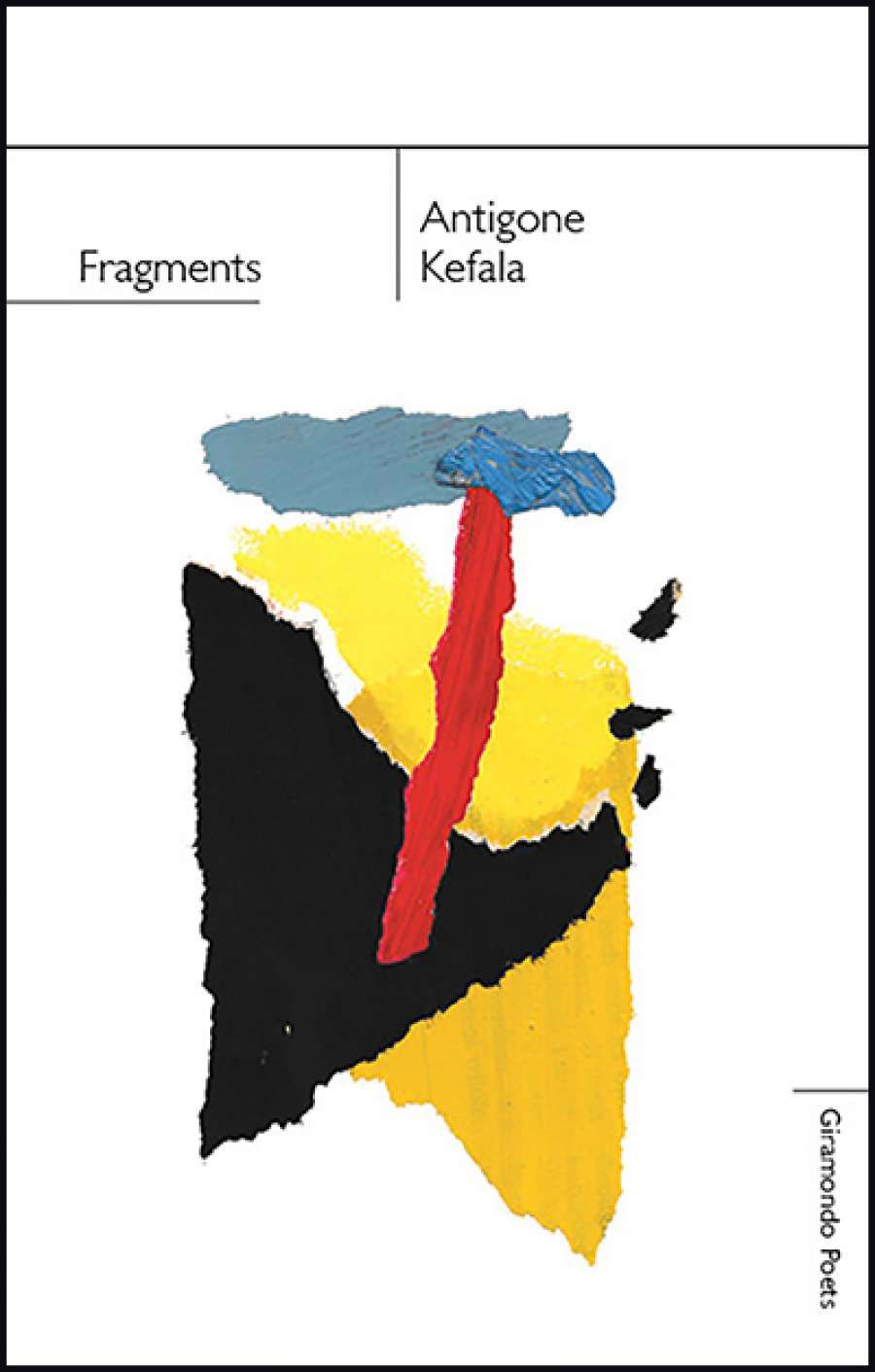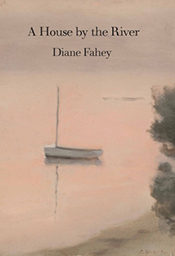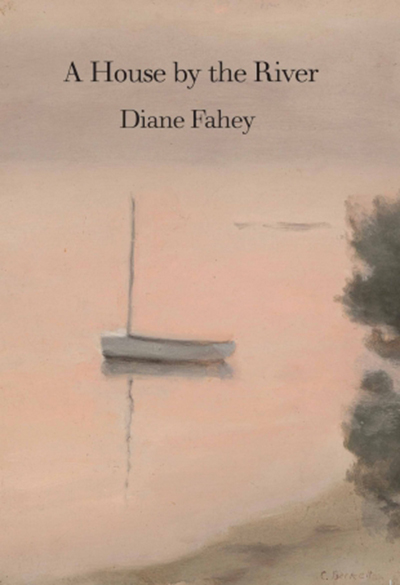
- Free Article: No
- Contents Category: Poetry
- Custom Article Title: Gig Ryan reviews 'Fragments' by Antigone Kefala and 'A House by the River' by Diane Fahey
- Review Article: Yes
- Online Only: No
- Book 1 Title: Fragments
- Book 1 Biblio: Giramondo Poets, $24 pb, 82 pp, 9781925336191
- Book 2 Title: A House by the River
- Book 2 Biblio: Puncher & Wattman, $25 pb, 97 pp, 9781922186874
- Book 2 Cover Small (400 x 600):

- Book 2 Cover (800 x 1200):

- Book 2 Cover Path (no longer required): images/ABR_Online_2017/June_July_2017/A%20House%20by%20the%20River_400.jpg
How to reconcile with, and incorporate, one’s past is a continuing preoccupation in Kefala’s work, as poems niggle at the conventions of persona and politeness that may conceal ruins. Her dramatically short lines emphasise this tone of foreboding: ‘The past / a drink, a poison / we thirst for’ (‘Photographs’); ‘Let it burn everything, the fire. / For who can rise now / out of their ashes?’ (‘Death by Fire’).
Fragments is divided into five sections that may be read chronologically. The first three pivot on memory and experience; later poems, such as ‘The Fatal Queen’ (presumably Clytemnestra), have a more tightly wound intensity, but all throughout these fragments some bleakness, or admonishing vision, invades, such as the quick shift in images from dawn to death in ‘First Encounters, Dawn’: ‘Below, the valley smoked / between the charcoal stubs / of the burnt trees, / the charred flesh covered / in fine drops of sweat.’ In Kefala’s poems, each site is a plane of time necessarily rippled and haunted by the past’s undertow, and nothing is static.
In Diane Fahey’s poems, her chief concerns have been visual description and story, from her earlier retellings of myths and fairy tales in somewhat jaunty tones (such as in The Sixth Swan, 2001), to imagist perceptions of travel (The Stone Garden, 2013). A House By The River, her twelfth book, continues that descriptive interest in its first two sections, which form an almanac of seasons, birds, her mother’s garden (the title of the first poem), as well as some ekphrastic poems. But its central concern is in the third and fourth sections that record her mother’s gradual decline, and the following bereavement: ‘Unlocking the door, I step into winter’s / closed, infinite room, a pulled thread of grief / down my body’s left side ... / This, it would seem, / is weather for visiting unreclaimed selves / crying with diamond beaks from a packed nest’ (‘After the Rain’).
Most poems are written in loose unrhymed sonnets which may conclude with half-rhyme, in present tense, often employing present passive forms, and grammatical inversions. These forms possibly work better in the poems of grief, but feel laboured in many others, in which description is so crowded as to lessen the impact of a particularly apt image – ‘the sound of their wings a shuffled card deck’ (‘New Holland Honeyeaters’); ‘A black-shouldered kite ... poised on a shelf of air’, (‘The Long Fields, the Cliffs’). The collection would have benefited from the trimming of a few of these poems which seem peripheral to its later personal content, though Faye’s eye for detail and her use of metaphor can be impressive. As with the American poet Mary Oliver, whom Fahey cites as an influence, any depictions of nature necessarily have ecological implications, as the poet records life before the coming degradations and extinctions. Like Oliver, Faye also seeks either epiphany, or submersion of self, in nature. The third section measures the all-consuming experience of caring for a loved parent, chronicling daily rituals and tragedies.
Slowly, you are not quite yourself:
the woman I know as gracious, lucidly
patient ...
‘You do too much,’ you diagnose,
innocent of the cure: ill health for me,
death for you; whichever knocks first.
(‘In Care’)
Fahey’s nature poems anchor to their enclosed moments, reciting each angled detail, whereas many of these more harrowing poems are criss-crossed by a profusion of intentions – filial piety, confession, record, prayer – as well as by overwhelming love and loss. Some of the best are the simplest ones, such as ‘Luck’, which lists the poet’s mother’s treasured good luck charms.


Comments powered by CComment